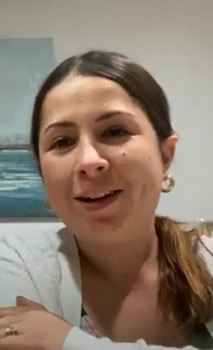Artificial Insemination
in Mexico
All you need to know about Artificial Insemination in Mexico.
Ask us all your questions about treatments in Mexico!
Artificial Insemination (AI) in Mexico
The objective of Artificial Insemination (AI) is to respect as much as possible the natural environment of the gametes, thus promoting fertilization.
This technique consists of placing a semen sample, previously prepared in the laboratory, inside the woman's uterus in order to increase the potential of the spermatozoa and the chances of fertilisation of the ovum.
Artificial insemination is performed in consultation, without sedation and without the need to go through the operating room. After the placement of a speculum, the semen sample is introduced through a cannula into the uterus.
After the process, the patient rests for a few minutes in the consultation, gets dressed and is given the date to perform the pregnancy test and will be scheduled if necessary, the medication to be taken from that time.
During these 15 days, it is recommended to live a normal life, avoiding sport or any other high intensity activity, but without forgetting to do the usual routines.
Meet Dr. Alejandro Castillo Peláez
Dr. Castillo Peláez would like to connect with you for a consultation.
👇🏼 Book a consultation
Get answers to all your questionsabout fertility treatments in Mexico.
Thank you. We'll get in touch with you soon.

and reproductive biologist
Patient stories and testimonials
Read the great reviews from patients who have been fortunate enough to have Dr. Alejandro Castillo as their fertility specialist.










We want to facilitate
your fertility treatment in Mexico.
Call us now and we will answer all your questions.
+1 (877) 960-0679Toll-Free Number
What is Artificial Insemination?
Artificial insemination is a low-complexity assisted reproductive treatment. It consists of introducing a semen sample, either from the couple or from a donor, into the woman's uterus.
This procedure increases the chances of pregnancy with respect to sexual intercourse because the semen sample is previously treated in the laboratory and also stimulates the ovary to control the growth and maturation of the eggs.
Depositing the treated sample in the woman's uterus reduces the distance that the sperm must travel to the egg and the scheduling of insemination allows maximizing the chances of fertilization and pregnancy.
In what cases is it indicated?
Artificial insemination can be performed with a sample of sperm from the donor or the couple.
This treatment is recommended for:
- Women with a good number of quality eggs and no male partner.
- Women with alterations in ovulation.
- Women with some alteration in the entrance of the uterus.
- Heterosexual couples in which the man presents slight or moderate anomalies in the quality of the spermatozoa. In cases of poor seminal quality or absence of sperm, our medical team will recommend the best option to increase the chances of pregnancy.
- Heterosexual couples in which the man is a carrier of a genetic disease. If this disease cannot be studied in embryos, our medical team will recommend the use of sperm from a donor.
Success rates in Mexico
Artificial insemination, being a treatment of low complexity, offers pregnancy rates lower than other assisted reproduction treatments, but higher than those of sexual intercourse.
You can check our success rates, audited by an accredited company and updated every year, here. The possibilities of pregnancy depend in each case on many factors - age, ovarian reserve, medical and reproductive history, etc.
 @enlistalo.fertilidad
@enlistalo.fertilidad




We want to facilitate
your fertility treatment in Mexico.
Call us now and we will answer all your questions.
+1 (877) 960-0679Toll-Free Number
First consultation
At the first consultation in a clinic, fertility specialists perform a personalized evaluation of each patient to determine the most appropriate assisted reproductive treatment. This session includes a complete gynecological study, as well as an analysis of the sperm in the case of heterosexual couples.
Ovarian stimulation
With the beginning of the treatment, which is marked by the woman's menstrual cycle, ovarian stimulation begins, which has an estimated duration of 10-12 days. This stimulation increases the chances of success, since the woman naturally produces only one egg in each menstrual cycle, while in this way ensures the development of one or two.
The specialist carries out an exhaustive monitoring of the stimulation by means of ultrasounds (3 or 4) and blood tests. Once the follicles have reached the appropriate number and size, a dose of hCG hormone must be administered to induce ovulation and, 36 hours later, artificial insemination is programmed.
Semen Sample Preparation
On the day of insemination, in the Andrology laboratoryc, the sperm sample is prepared to optimize its quality and thus increase the chances of fertilization.
If the couple's semen is used, the man must deliver the sample to the laboratory about 2 hours before treatment. This preparation allows andrologists to select and concentrate the sperm with the best mobility, discarding those that are dead, immobile or that move slowly.
Pregnancy test
After this process, and after resting for a few minutes, the specialists inform you of the optimal date for the blood pregnancy test, which is usually 14-15 days after insemination. Fertility specialists recommend that you live a normal life during this waiting period, avoiding only high-intensity activities.
If the result is positive, 20 days later a control ultrasound is performed in which the embryonic sac is confirmed. Once you are discharged, you can continue to monitor your pregnancy with your usual gynecologist.
Read our Cost of IVF in Mexico article.